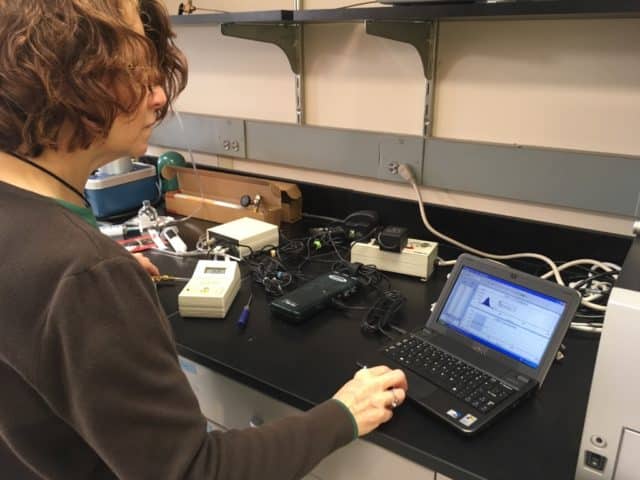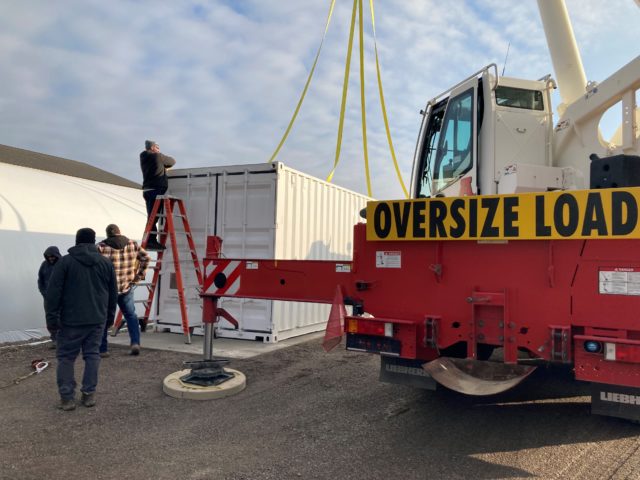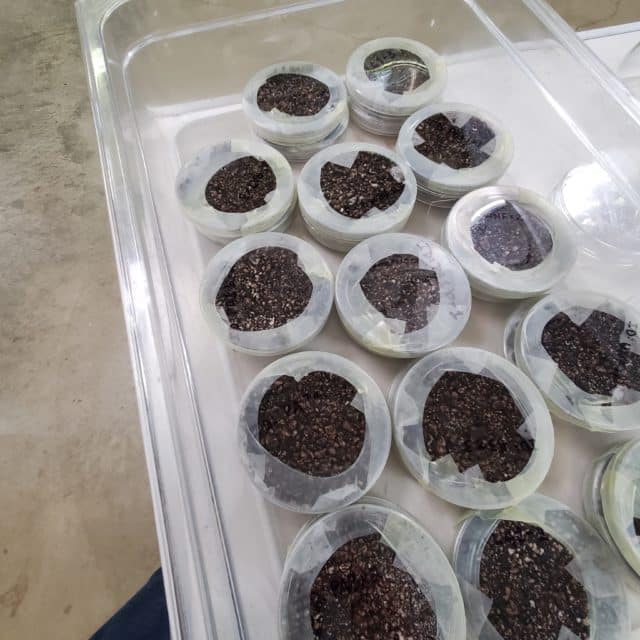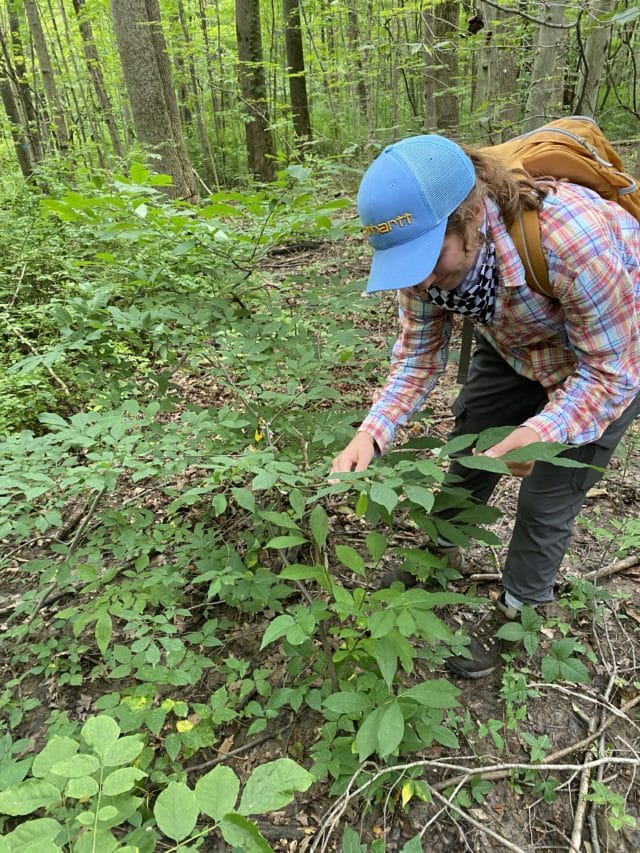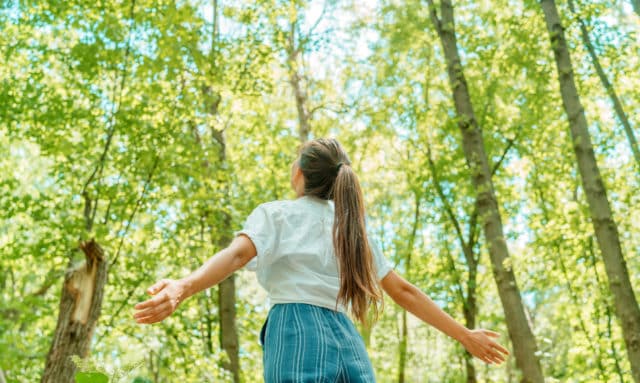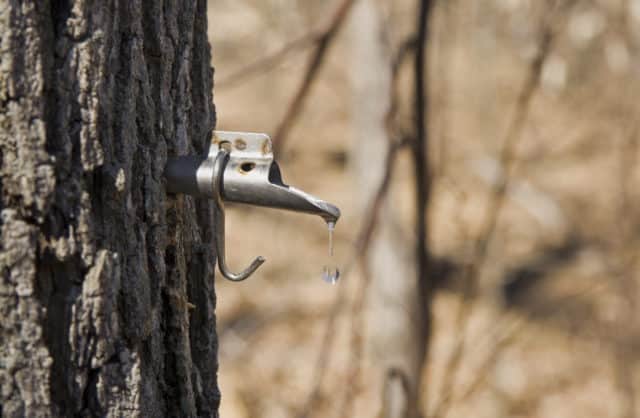

Why stop with trees…plant a mini-forest!
It may sound ambitious, but proponents of the Miyawaki Method call for diverse and dense plantings of native trees in spaces as small as a traffic island! Developed by Japanese botanist Akira Miyawaki, so-called Miyawaki Forests are gaining attention throughout the world. These mini-forests are increasingly planted in efforts to restore biodiversity and fight climate change impacts, especially in urban environments where land is scarce.
The Miyawaki Method involves several basic steps: choose a planting site, select appropriate native species, take steps to rejuvenate the soil, install plants at high density, thoroughly mulch the site, and weed and water as needed for the next several years. Maintenance drops after the third growing season as the plants establish and the expanding canopy provides its own mulch and shades out weeds. Proponents of this technique say it can be applied to areas of any size, but it is important to carefully select the species that are best suited to the local environment. This technique is said to bypass the early stages of ecological succession, resulting in the creation of a mature forest in a comparatively short time.
Miyawaki painstakingly selected plants for all sites that would theoretically be among the climax species of natural ecological succession in the area. This can be difficult to ascertain in a highly developed landscape. As he refined his ideas, Miyawaki searched for traces of original forest vegetation throughout Japan. Among other avenues of exploration, he observed that it was possible to gain insight into past landscapes by studying ancient groves of natural forest, called chinju-no-mori, traditionally left intact as shrines around villages and towns.
Native plants are favored in the Miyawaki method for many reasons. They are adapted to the local environment, having evolved with the landscape over millennia, and as a result they have much greater potential to interact with one another and with local microorganisms and animal species. These interwoven ecological relationships make the ecosystem more productive and resilient.
Miyawaki worked with industrial leaders, governments, cities, schools and universities in Japan and abroad to plant mini-forests, or as he termed them, environmental protection forests. In his lifetime, Miyawaki monitored the planting of over 1500 sites. He recommended the method especially for small patches of stressed land in urban and industrial environments, though it is certainly not limited to such locations. Miyawaki forests have been established throughout the world and include a 2,153 square-foot site along the Beirut River in Lebanon, 74-acres of land surrounding portions of the Great Wall of China, 145 mini-forests in collaboration with cities throughout the Netherlands, and a 30-acre parcel of degraded, semi-arid land in Rajasthan, India.
Even small, vegetated plots can provide many benefits to a landscape, including buffering against heat and winds, polluted air, flooding, and drought; provision of habitat, food, biomass, and ecosystem services; as well as social benefits like opportunity for education, recreation, and immersion in nature.
I was excited to be part of a team that recently planted a Miyawaki-inspired mini-forest at Kelly’s Working Well Farm (KWWF), a 6-acre educational permaculture farm in Bainbridge Township, Ohio. The goal of the project was to pilot a mini-forest planting in order to learn through experience and inspire interest in this method within the region.
According to the Miyawaki method, seedlings in a mini-forest should be planted at high density, about three plants per square meter. This density stimulates mutualistic and competitive interactions among the plants, and promotes competition for sunlight, which increases the upward growth of seedlings. Miyawaki insisted that plantings consist of a diverse selection of species. A typical plan consists of about 70-80 percent canopy and subcanopy saplings, 10 percent shrubs, and the remainder a mix of mid-sized understory plants.
About 125 saplings of close to twenty different native tree and shrub species were planted in a 300 square-foot plot at KWWF. Species included:
- Northern hardy pecan, Carya illinoinensis
- pin oak, Quercus palustris
- red oak, Quercus rubra
- shagbark hickory, Carya ovata
- bitternut hickory, Carya cordiformis
- tupelo, Nyssa sylvatica
- black cherry, Prunus serotina
- chokecherry, Prunus virginiana
- Eastern redbud, Cercis canadensis
- flowering dogwood, Cornus florida
- pawpaw, Asimina triloba
- American hazelnut, Corylus americana
- witch hazel, Hamamelis virginiana
- bottlebrush buckeye, Aesculus parviflora
- Carolina allspice, Calycanthus floridus
- American wild plum, Prunus americana
- red chokeberry, Aronia arbutifolia
In addition, a few not-entirely-native Dunstan chestnuts, Castanea dentata x mollisima, were included.

In preparation for planting a mini-forest, the soil should be remediated depending upon its condition. This often means decompaction through digging and amending the site with organic material. The planting site at KWWF was formerly a winter paddock for a small flock of sheep and goats. The team rented a mini-excavator to scrape off the top layer of soil and organic matter, and then dig and loosen the heavy clay soil underneath to a depth of approximately three feet.

After the soil was loosened, a dilute solution of fish emulsion was applied, and then the topsoil was replaced and the site smoothed by raking.

A team of thirteen people, including children, planted the saplings in about two hours on a chilly Saturday afternoon in November. Post-hole diggers were especially useful for digging holes deep enough to accommodate saplings grown in tall pots, without unnecessarily disturbing too much soil or making big, messy holes.

The finishing application of mulch provides familiar benefits to the planting site: protecting bare soil from erosion, temperature extremes and water loss by evaporation, as well as suppressing weed growth, and eventually decomposing to feed the soil. At KWWF the team applied about 6-inches of wood chips from a local tree service as mulch. The kids were especially helpful distributing the mulch in buckets to “tuck in” the baby trees.

As with any method, this system is not without its critics. Relative to other large scale tree planting efforts, it can be expensive. Site preparation may be an extensive undertaking, requiring machinery and skilled labor. Some point to the unclear outcomes of these types of plantings. Can such small sites really be considered forests, and carry their inherent ecosystem benefits? Are these ultimately just creating vulnerable edge habitats? And some critics say the Miyawaki Method violates fundamental principles of ecological restoration. Inappropriate species selection and poorly chosen sites risk doing harm to native landscapes, and could potentially reduce biodiversity, drive species to extinction, and hamper ecosystem resilience. For example, replacing native grasslands with forest damages those important ecosystems, which themselves provide valuable habitat and many ecological services to humans and other organisms in the community.
Lastly, as media attention to this and other climate-change mitigation strategies increases, there are voices warning of the risks of focusing too much hope on tree planting as the easy-way-out of climate change. Even at larger scales, an assemblage of trees doesn’t necessarily make a forest. For example, when the U.S. Forest Service plants monocultures of trees to replace native forests after timber harvest, can this be considered a fair trade-off? Planting trees, or even Miyawaki mini-forests, is no substitute for protecting existing, mature forests. Furthermore, planting trees is not a substitute for reducing overconsumption, which both generates greenhouse gasses and destroys and degrades ecosystems. To be successful, tree planting must be a component of an overall strategy to conserve and restore ecosystems.
There is plenty of room for inquiry and experimentation to compare the biodiversity and ecosystem impacts of Miyawaki forests with corresponding plots restored through other methods. Research in the Netherlands shows that Miyawaki forests support greater biodiversity than other types of plantings, and that carbon absorption in Miyawaki forests is on par with other forms of native restoration. I look forward to watching the mini-forest at KWWF grow, and learning through its development.
Most people do not have the time or resources to take on large scale ecosystem restoration projects. But small groups of people in diverse locations and circumstances can work together to deepen understanding of their native landscapes and species and re-create spaces for them to live. A natural forest is a community of organisms that coexist and rely on interactions with each other for the basic ingredients of life. Let’s plant together, and remember that we, too, can be a part of such a community.


Jessica Burns
Gardener
Jessica Burns is a Gardener at the Holden Arboretum, where she has worked since 2018. Jessica has studied herbalism and organic farming for over ten years. She loves propagating plants from seed and hopes to have her own nursery someday. Jessica hopes to affect change in the world by promoting ecologically beneficial perennial food systems and planting trees.
